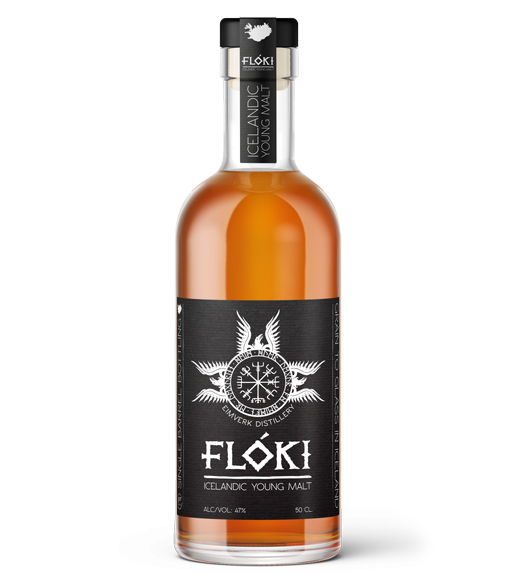
The Ultimate Guide to Icelandic Liquor and Spirits

- A Brief History of Icelandic Liquor
- Prohibition
- Icelandic Liquor Today
- What Makes Icelandic Liquor Unique
- Pure Icelandic Water
- Unique Natural Ingredients
- Rich Historical Heritage
- 3 Must-tries of Icelandic Liquor
- 1. Brennivín
- 2. Flóki Whiskey
- 3. Björk Liqueur
- Top 3 Brands of Icelandic Vodka
- 1. Reyka Vodka
- 2. Katla Vodka
- 3. Loki Vodka
- Top 3 Brands of Icelandic Gin
- 1. Himbrimi Old Tom Gin
- 2. Ólafsson Gin
- 3. Icelandic Eagle Gin
- 3 Curiosities in Icelandic Liquor
- 1. Opal
- 2. Landi
- 3. Fjallagrasa Icelandic Schnapps
- Where to Find Icelandic Liquor
- Keflavik Airport Duty-Free
- Vinbudin Alcohol Store
- Bars and Restaurants
- Icelandic Drinking Culture
- Thorrablot
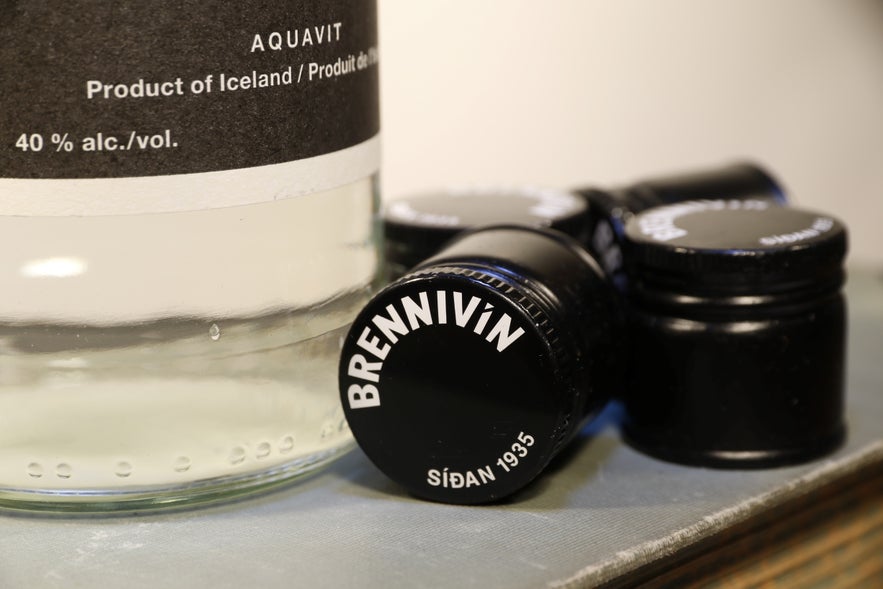
Alcohol is often associated with Icelandic culture thanks to its Viking image. This isn't far from the truth, as statistics show that Icelandic people still like to have a drink or few, just like their ancestors did. Although Iceland's drinking culture has a history stretching back to its settlement, production could often be tricky due to tough weather conditions, and the country had a decades-long prohibition that was only lifted late in the last century.
Despite all the troubles, Iceland now has a thriving alcohol industry where innovation meets top-end craftsmanship. Icelandic liquor, in particular, has made quite a splash internationally, with excellent and often unusual spirits leaving their mark on people.
A great way to get into the spirit of Icelandic spirits is on a guided 2.5-hour Reykjavik beer & schnapps walking tour or several other delicious food and drink tours. As a Guide to Iceland customer, you'll get access to the VIP Club, which has discounts and exclusive offers at many bars, restaurants, cafés, and stores around the country.
Whether sipping on Brennivín or savoring a modern cocktail made with Icelandic moss at a hotel in Iceland, you should not miss the chance to get to know the spirits that warm the Icelandic people's spirits. If you are interested in the fascinating world of Icelandic liquor, read on and let us guide you through the Icelandic spirit world.
- Take a look at the Happy Hour guide to Reykjavik's cheapest bars
- See also: The VIP Club: Save Big on Exclusive Offers & Discounts
A Brief History of Icelandic Liquor
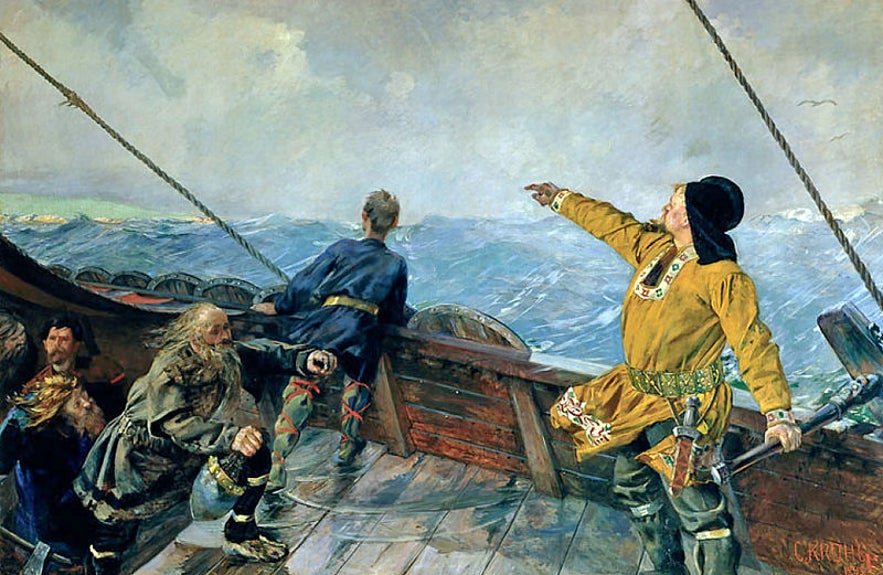
Photo from Wikimedia, Creative Commons, by Christian Krohg. No edits made.
When Iceland was settled in the 9th century, Norse settlers brought knowledge of brewing and distillation techniques. Ale, mead, and beer are commonplace in the Icelandic sagas and old poems that describe lively drinking culture in detail, such as this excerpt from the old Icelandic poem of Hávamál:
Less good than they say for the sons of men
is the drinking oft of ale:
for the more they drink, the less can they think
and keep a watch o'er their wits.
Yep, even the Vikings had warnings about drinking too much. In Norse mythology, the goat Heiðrún resides on the roof of Valhalla and consumes the leaves of the World Tree, Yggdrasil. Her diet results in the production of an endless supply of mead or ale, which flows from her udders. Such an animal would probably fetch quite a pretty penny on the market today.
Despite the Icelandic people's long-lasting enthusiasm for a drink, the country's climate made brewing and distilling alcohol problematic, so local drinkers primarily relied on imports throughout the centuries. This was especially prominent in the 17th and 18th centuries when the Danish Crown had a monopoly on imports of wares such as alcohol.
Prohibition
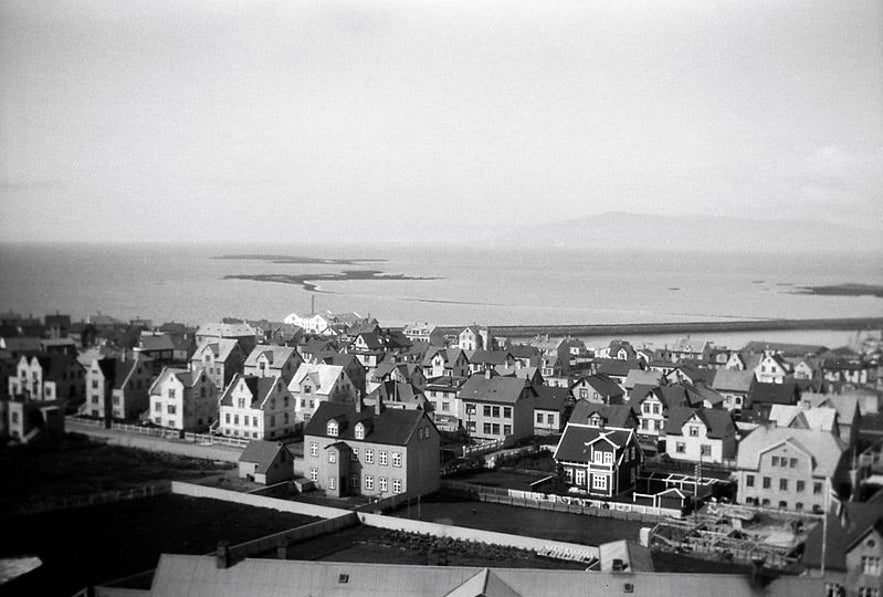
Photo from Wikimedia, Creative Commons, by Swedish National Heritage Board. No edits made.
Early in the 20th century, a growing number of voices were concerned that alcohol consumption in Iceland had become excessive and was hindering societal growth. This led to a prohibition in Iceland in 1915, where the sale of all alcohol was banned.
Iceland's trade relations with Spain caused the ban to be partially lifted in 1922 when Spain threatened to stop buying cod from Iceland if Spanish wine remained banned. Import of alcohol was later permitted if the strength of the alcohol was under 21%. Beer was, however, still banned.
A ban didn't stop creative minds in Iceland from getting their hands on spirits. Smuggling and brewing were commonplace, and doctors could prescribe alcohol for medicinal use against often mild ailments. The ban on liquor was lifted in 1933, but beer remained banned. It wasn't until March 1st, 1989, that the beer ban was fully lifted, a day that the Icelandic people now celebrate as Beer Day. This longstanding ban makes Iceland the only Western democracy to have a nationwide prohibition on beer for such a prolonged period.
Icelandic Liquor Today
Following the repeal of the beer ban and the prohibition, Icelandic breweries and distilleries started to emerge. Today, Icelandic alcohol production has evolved into a thriving industry celebrated for its craftsmanship and distinct flavors. Local distilleries create various spirits, including vodka, gin, schnapps, and traditional Icelandic liqueurs infused with native botanicals.
Trying some of the many liquors Iceland has to offer is an excellent way for visitors to connect with the country's heritage and experience its unique drinking culture.
What Makes Icelandic Liquor Unique
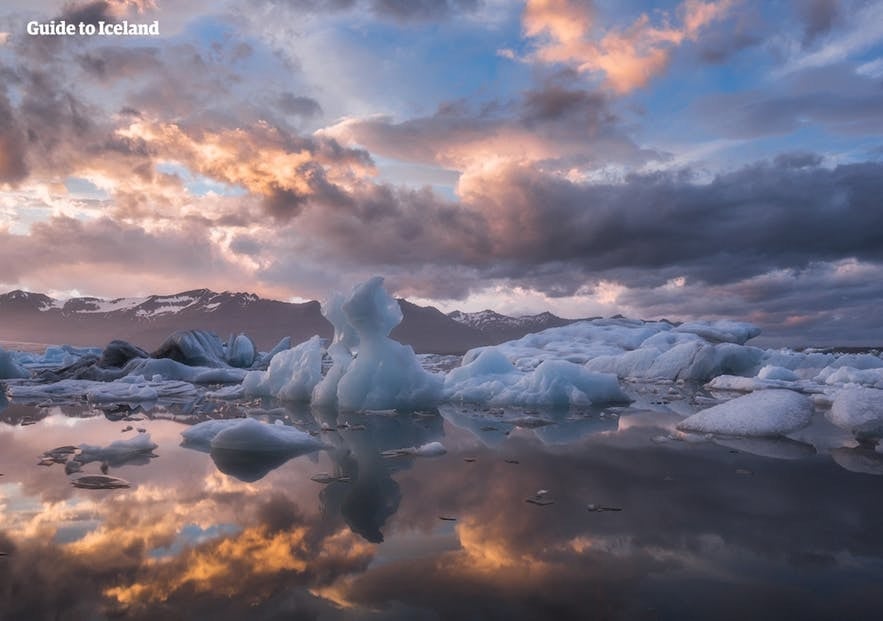 While Iceland is still relatively new on the international stage of brewing and distilling alcohol, it has already made its mark on the scene thanks to some of the unique qualities Iceland has to offer.
While Iceland is still relatively new on the international stage of brewing and distilling alcohol, it has already made its mark on the scene thanks to some of the unique qualities Iceland has to offer.
Pure Icelandic Water
Iceland's water originates primarily from glacial meltwater and natural springs. The country is home to numerous glaciers and ice caps, providing a steady supply of pure, mineral-rich water. Icelandic water undergoes natural filtration as it passes through layers of volcanic rock and lava fields. This volcanic filtration process helps remove impurities, resulting in exceptionally clean and clear water, which lends itself well to brewing and distilling smooth liquors.
Unique Natural Ingredients
The Icelandic wilderness has many natural ingredients reflecting the country's unique environment. Juniper berries, arctic thyme, birch branches, and even Icelandic moss are all ingredients that leave a tasty and memorable mark on Icelandic spirits.
Rich Historical Heritage
Since the drinking culture of Iceland has roots ranging back to its settlement, there is plenty of inspiration to draw on when coming up with concepts for liquor. Taking a swig of the right liquor can instantly put you into the mindset of a Viking or an Icelandic fisherman.
3 Must-tries of Icelandic Liquor
If you're going to be exploring Icelandic drinking culture, here are a few local brands of liquor that you have to try out while visiting the country.
1. Brennivín
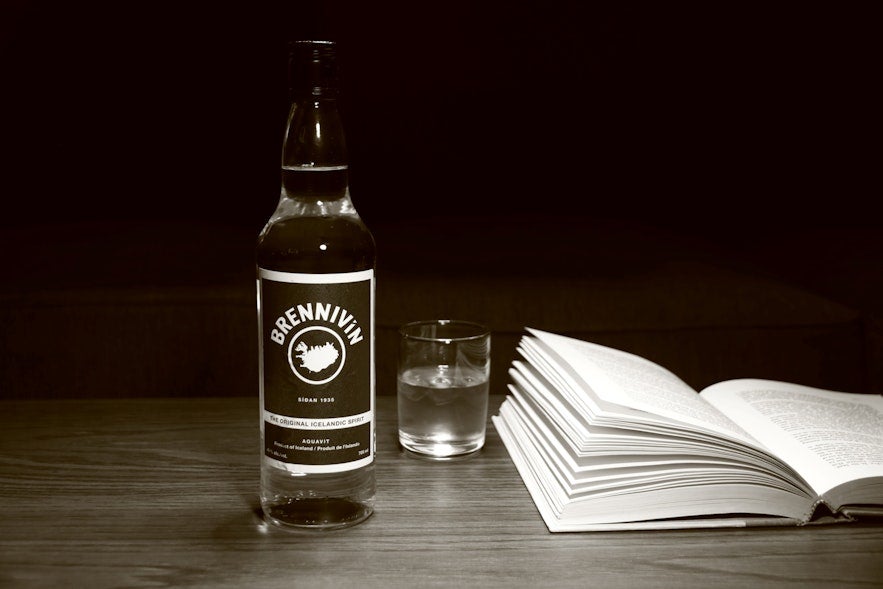 No list of Icelandic liquor would be complete without Brennivín, Iceland's signature spirit. Nicknamed the "Black Death," the name Brennivín translates to "burning wine" in Icelandic. This word has historically been used for several strong liquors imported by Danish traders in centuries past.
No list of Icelandic liquor would be complete without Brennivín, Iceland's signature spirit. Nicknamed the "Black Death," the name Brennivín translates to "burning wine" in Icelandic. This word has historically been used for several strong liquors imported by Danish traders in centuries past.
Today, the name Brennivín is usually reserved for a specific type of clear, unsweetened schnapps produced since the 1930s. It is a type of akvavit, a type of spirit common in Nordic countries, and has a distinctive taste that can be an acquired preference due to its strong caraway flavor.
While it was once a popular choice for mixing, Brennivín is most commonly consumed as a straight shot or "sipping" spirit. Brennivín has a large part in many Icelandic traditions and is taken with traditional Icelandic cuisine such as fermented shark (hákarl), where the strong flavor of Brennivín is said to complement the pungent taste of the meat.
The state originally produced Brennivín during the prohibition era until a private company overtook production shortly after the beer ban was lifted. The iconic black label, initially used by the state to make the drink seem as unappealing as possible, remains on the bottle.
Although Brennivín is Iceland's signature spirit, it is rarely a drink of choice and is rather reserved for special occasions. A shot of Brennivín is offered at the end of the excellent Reykjavik Food Walk Tour, which offers valuable insight into Iceland's culture of food and drink.
- Learn more: What is Brennivín and How Is It Made?
2. Flóki Whiskey
Eimverk Distillery, which produces Flóki whisky, has played a significant role in putting Icelandic whiskey on the map. The whiskey is matured in new American oak casks using barley from Icelandic soil combined with Icelandic spring water, resulting in a complex malt.
The whiskey draws its name from the Viking explorer Hrafna-Flóki. One of the first voyagers to sail to Iceland and is credited for giving Iceland its name. Flóki made us of ravens to search the island, earning him the nickname which translates to "Raven-Flóki," and three ravens can be spotted on the whiskey's logo.
A great way to get a better insight into the distilling process at Eimverk Distillery is on a unique 1-Hour distillery tour with tastings of Icelandic whiskey, gin & brennivin.
3. Björk Liqueur
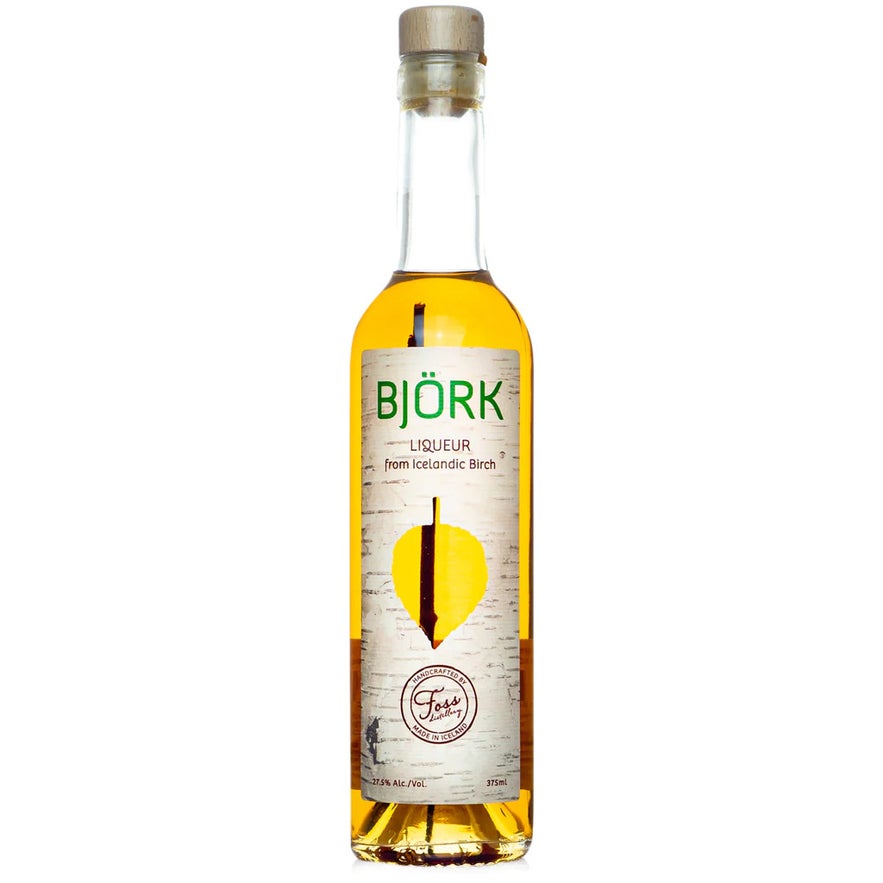 No, not the musician. Björk, named after the Icelandic word for birch, is a unique liquor made from the sap of the birch tree. The sap is harvested during the short spring season and then fermented and distilled to create a smooth and slightly sweet liquor.
No, not the musician. Björk, named after the Icelandic word for birch, is a unique liquor made from the sap of the birch tree. The sap is harvested during the short spring season and then fermented and distilled to create a smooth and slightly sweet liquor.
Björk is part of a larger family of birch liqueurs, as different variations are available in Birkir, Bjarki, and Börkur. The brand is easily recognizable thanks to the distillery's signature touch of putting a birch branch in every bottle.
Top 3 Brands of Icelandic Vodka
While Iceland is relatively new to the world of distilling vodka, there are already several high-quality vodka brands available that make use of the country's natural resources. Here are our choices for the best three Icelandic brands of vodka.
1. Reyka Vodka
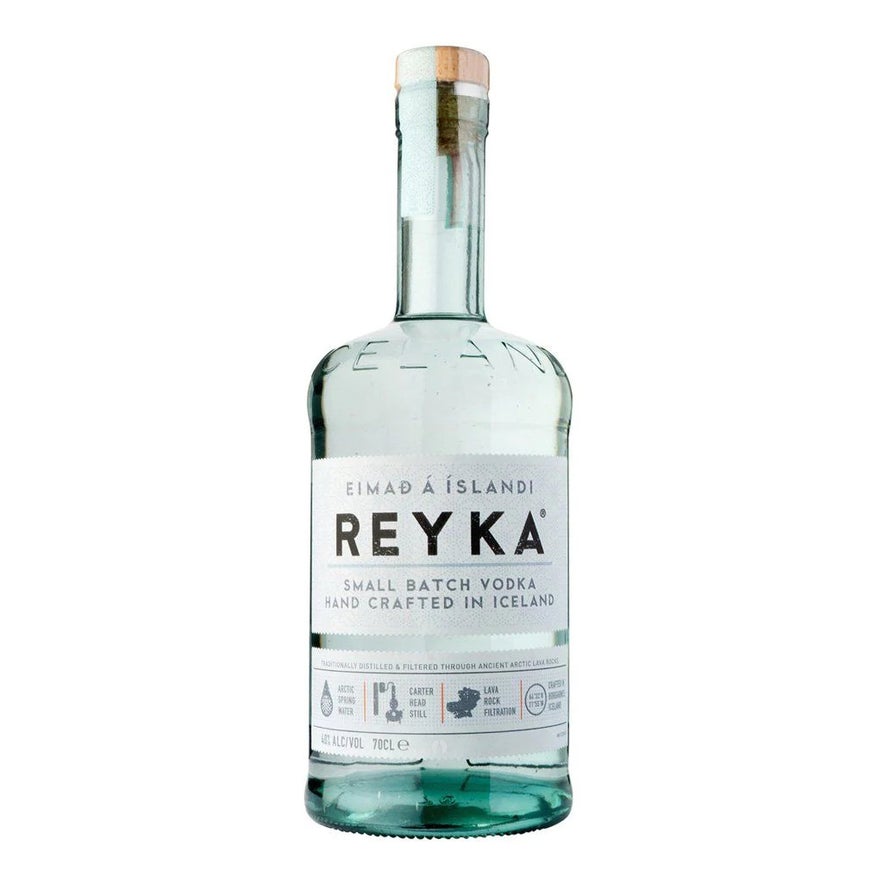
Introduced in 2005, Reyka Vodka is a premium vodka that quickly garnered international acclaim from vodka enthusiasts. Reyka is created using sustainable energy and is hailed for its exceptional quality and unique production process.
Distilled in Borgarnes from barley and wheat, Reyka Vodka is made from glacial water that runs through a nearby 4,000-year-old lava field. The rock naturally filters the water, resulting in some of the purest water on Earth. Researchers that have tested these waters found zero impurities. This water has a unique mineral composition that adds to the vodka's flavor and character.
2. Katla Vodka
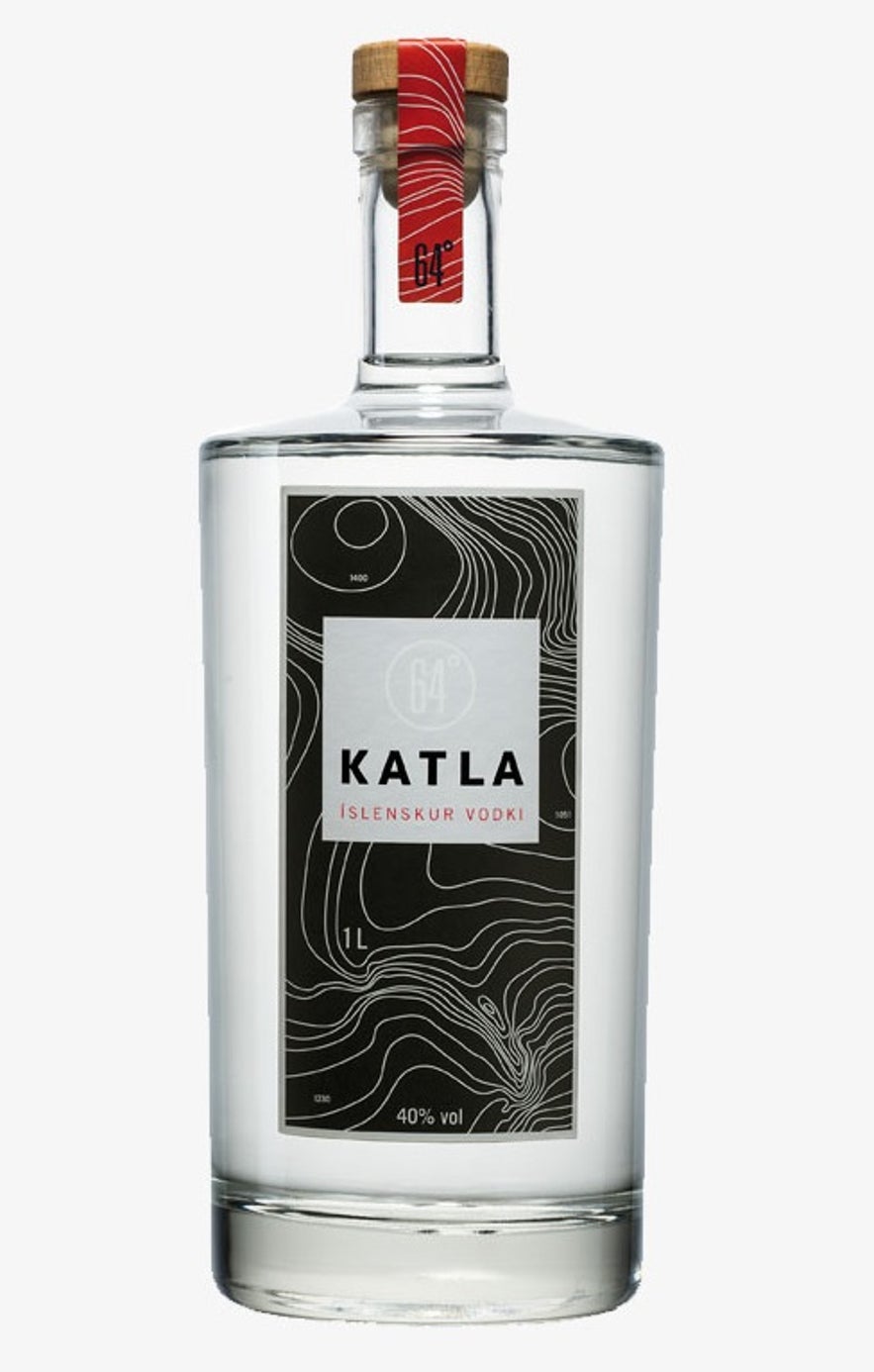
Produced by a family-run micro-distillery, Katla Vodka is another excellent addition to Iceland's emerging vodka scene. Making full use of Iceland's pure water, Katla is rich, smooth, and distilled as often as necessary to achieve the desired purity.
Sharing a name with Katla, one of Iceland's mightiest volcanos, the black and white packaging is a nod to the mountain's location on the map, with the red label at the cap symbolizing lava.
3. Loki Vodka
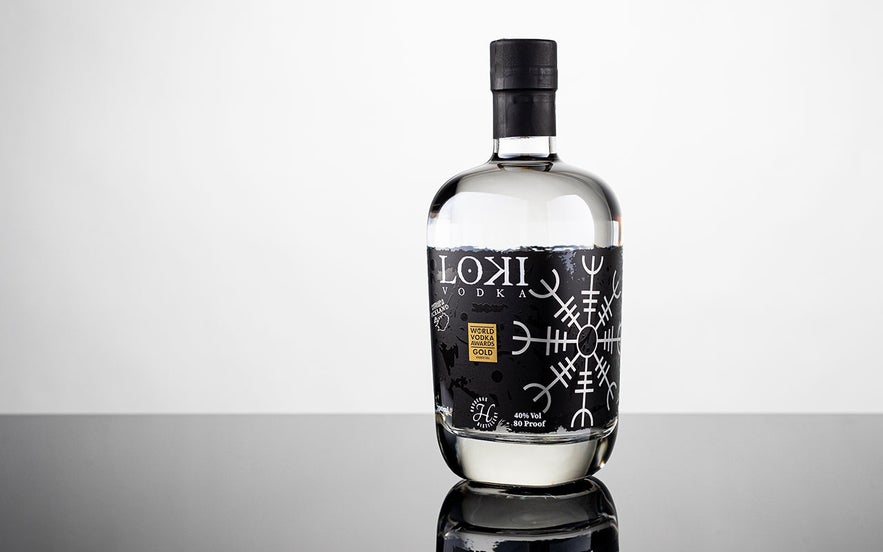 The silky smooth Loki Vodka is the only potato-based vodka distilled and bottled in Iceland. Having won international awards, Loki Vodka is considered one of the best premier vodkas available in Iceland.
The silky smooth Loki Vodka is the only potato-based vodka distilled and bottled in Iceland. Having won international awards, Loki Vodka is considered one of the best premier vodkas available in Iceland.
Loki Vodka is named after the Norse god of mischief, and the bottle features a large Icelandic magical stave, the Helm of Awe. This might mean the vodka makes you mischievous. We just know it tastes good.
Top 3 Brands of Icelandic Gin
Gin production has become increasingly popular in Iceland in recent years. The country's pure water and unique local ingredients make for a great base when producing a tasty gin. Here are our choices for the best brands of Icelandic gin.
1. Himbrimi Old Tom Gin
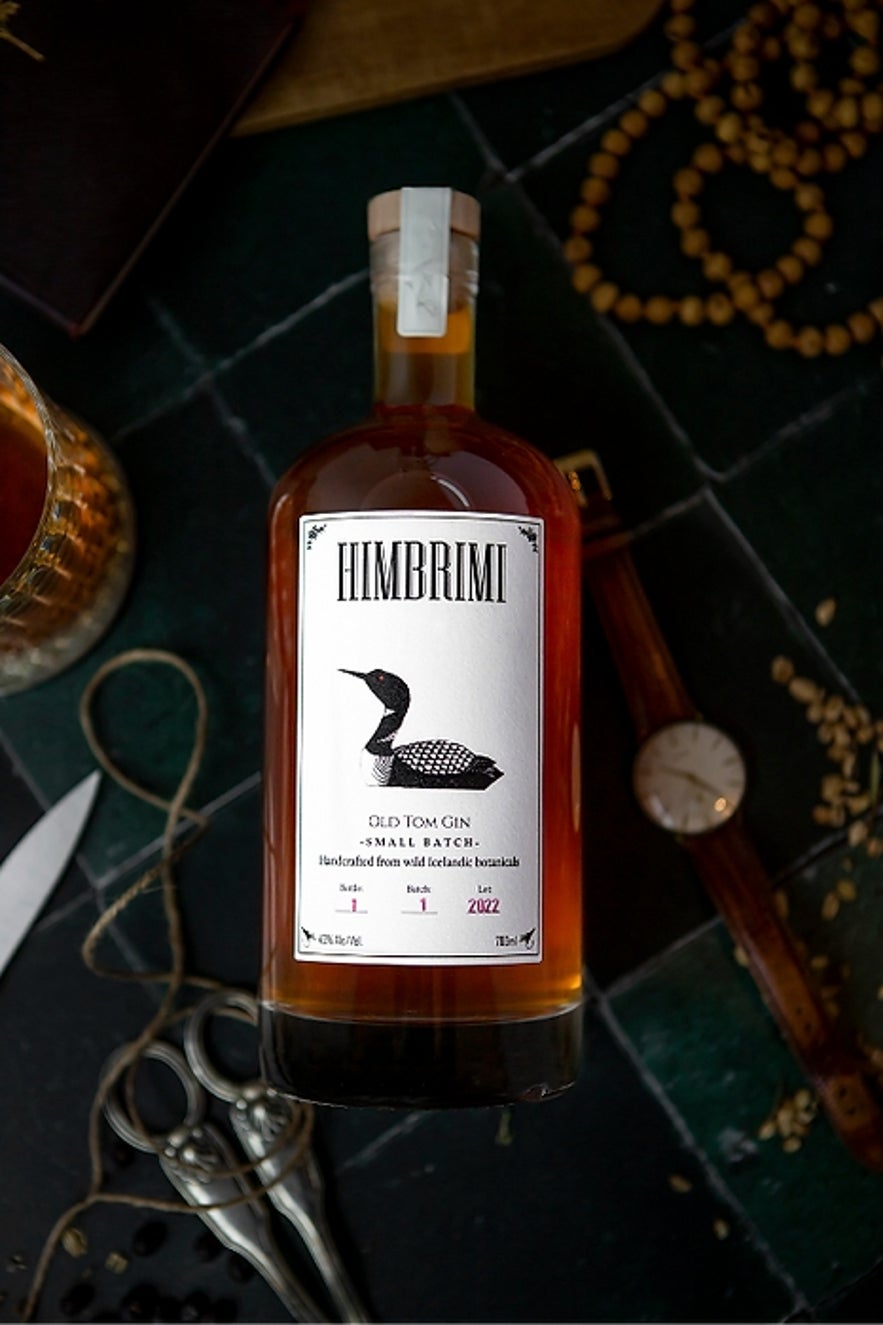 Based on an early 18th-century gin recipe, Himbrimi is inspired by the scent of botanicals that grow in the Icelandic wilderness. Himbrimi is a sweet, floral, and complex gin that has become quite popular in Iceland. As an Old Tom-style gin, it is pretty accessible for people who don't usually like gin.
Based on an early 18th-century gin recipe, Himbrimi is inspired by the scent of botanicals that grow in the Icelandic wilderness. Himbrimi is a sweet, floral, and complex gin that has become quite popular in Iceland. As an Old Tom-style gin, it is pretty accessible for people who don't usually like gin.
The gin's name is drawn from the Icelandic translation of the common loon, the native waterbird, which adorns the label of Himbrimi. A beloved bird inhabiting many lakes and ponds in Iceland, the common loon is known for its spectacular diving abilities and eerie calls.
2. Ólafsson Gin
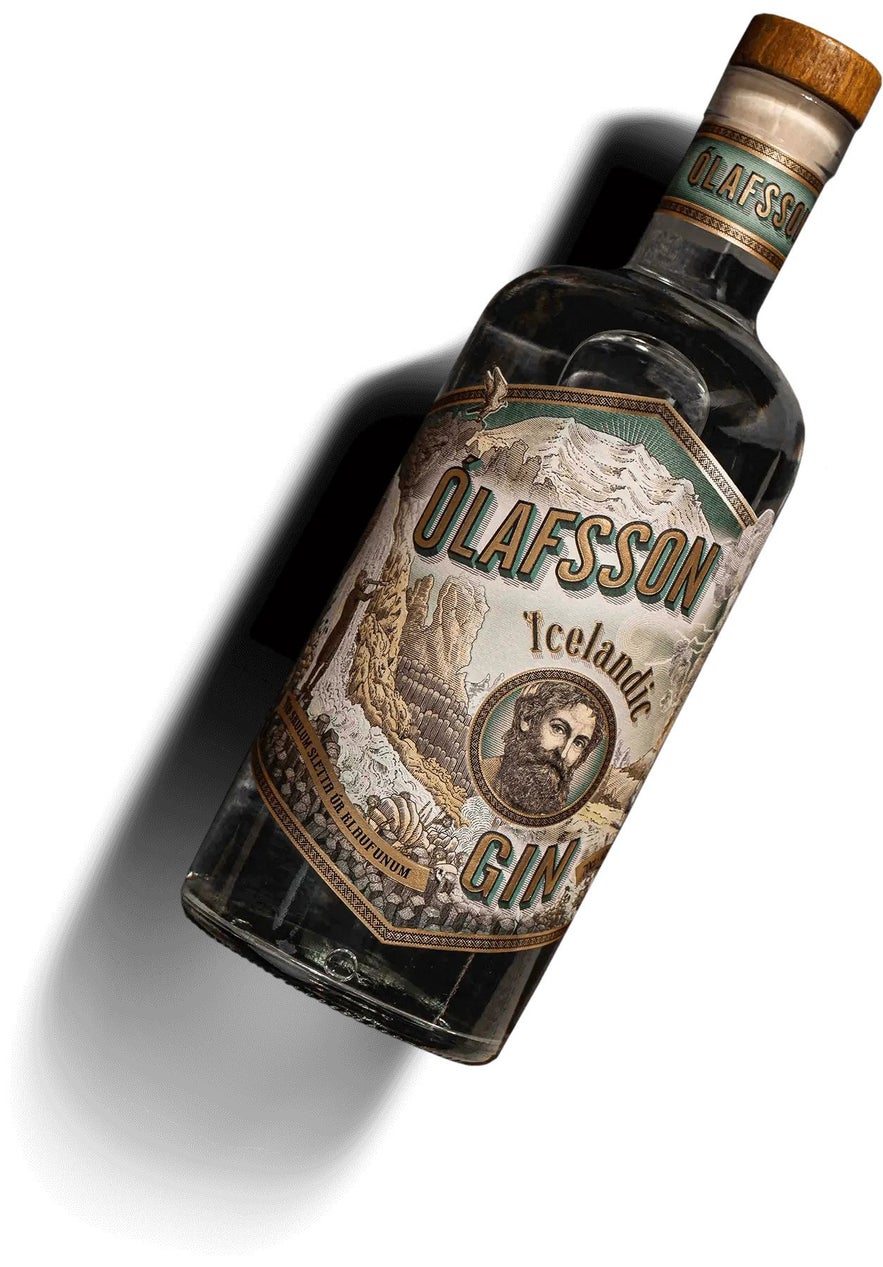 Named after a famous Icelandic explorer from the 18th century, the packaging of Ólafsson Gin looks like the cover of a classic adventure novel. With a complex taste, this gin is brewed using pure Icelandic ingredients such as arctic thyme, Icelandic moss, and juniper.
Named after a famous Icelandic explorer from the 18th century, the packaging of Ólafsson Gin looks like the cover of a classic adventure novel. With a complex taste, this gin is brewed using pure Icelandic ingredients such as arctic thyme, Icelandic moss, and juniper.
Eggert Ólafsson (1726-1768) was an Icelandic writer, naturalist, and traveler, best known for his collaboration with his colleague Bjarni Pálsson on the seminal work Travels in Iceland. They embarked on an extensive journey throughout Iceland from 1752 to 1757, documenting their observations and experiences of Iceland's landscape, nature, and culture.
3. Icelandic Eagle Gin
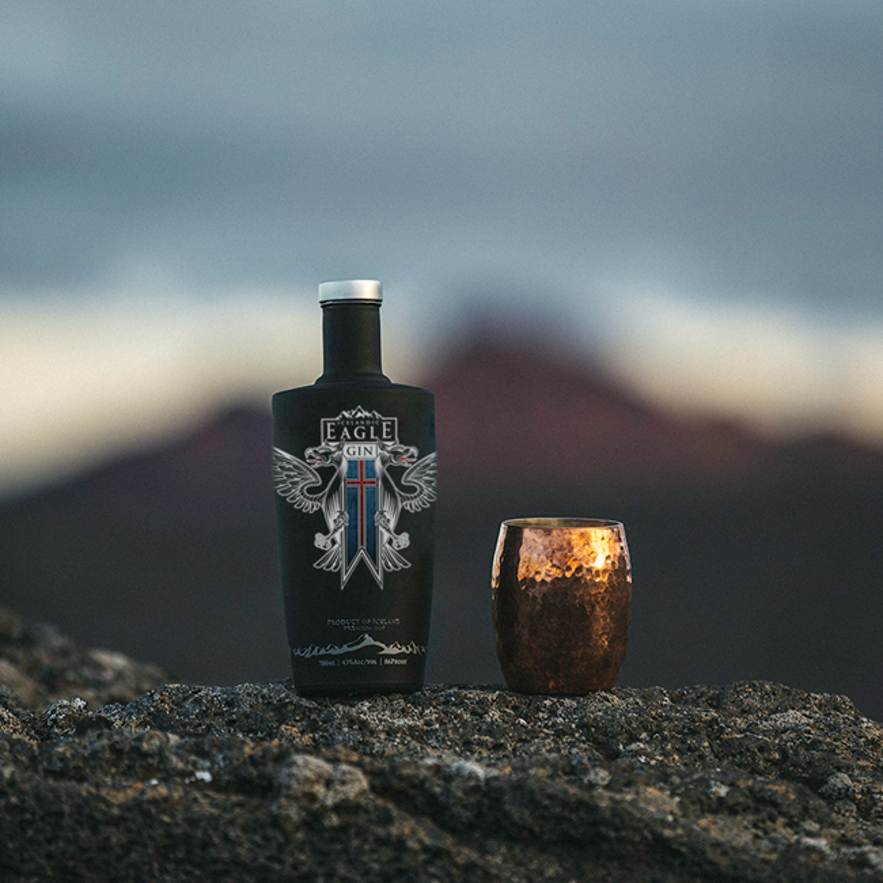
Strongman and Game of Thrones actor Hafthor Julius Bjornson served as the brand for Icelandic Mountain Vodka, the predecessor to Icelandic Eagle Gin. While not quite as muscular as the strongman, the eagle is still a fine symbol of Icelandic heritage.
3 Curiosities in Icelandic Liquor
Last but certainly not least is a list of unusual drinks unique to Iceland. Here are three liquors, each with its own connection to Icelandic culture.
1. Opal

Based on a popular household candy, Opal is a popular and longstanding staple in Iceland's liquor lineup. Opal is best described as sweet, with a strong taste of licorice and a hint of menthol.
As Icelandic children are raised on the chewable Opal candy, the transition to the liquor comes quite naturally and with a certain sense of nostalgia. People who do not have fond childhood memories of the candy might not take to the liquor as well, especially if they are unaccustomed to the taste of Nordic licorice. Film director Quentin Tarantino described Opal in an interview with Conan O'Brien:
"Now, I don't really know what poison tastes like because if I did, I'd be dead. But if I had to imagine what poison tastes like, it would be this stuff: Opal."
2. Landi
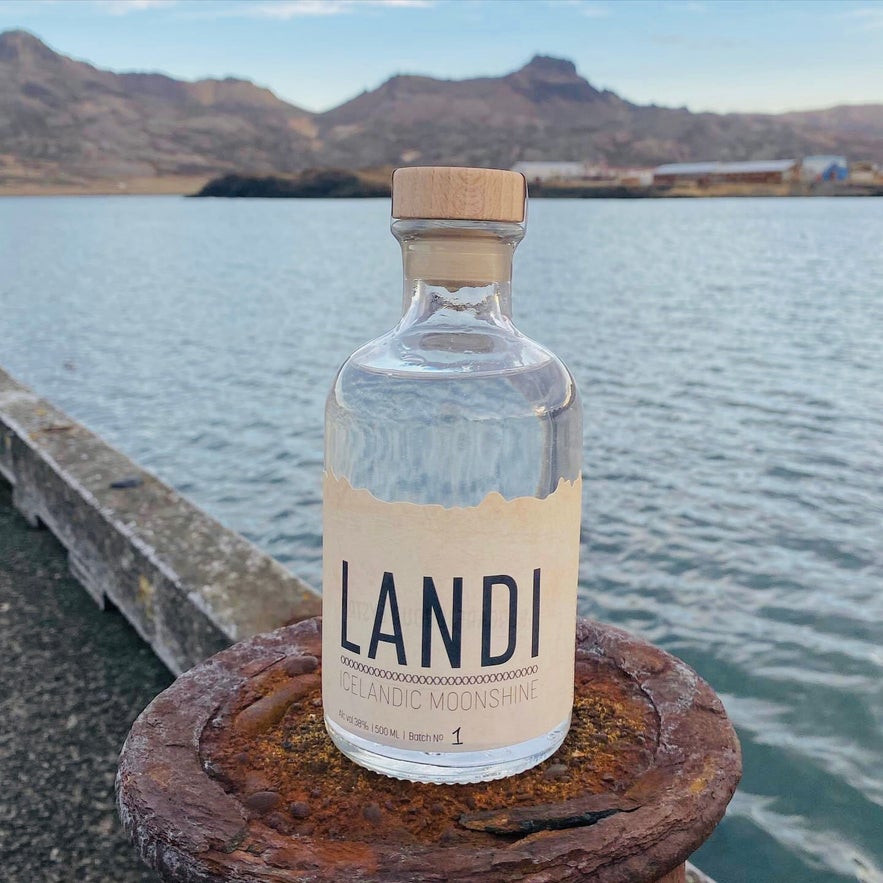 Landi is the name given to Icelandic moonshine, illegally distilled spirits that were popular during the prohibition era. Typically produced through homemade distillation methods, Landi can be dangerous to consume due to a lack of regulation. A common Icelandic urban myth is that drinking too much Landi could cause you to lose your eyesight.
Landi is the name given to Icelandic moonshine, illegally distilled spirits that were popular during the prohibition era. Typically produced through homemade distillation methods, Landi can be dangerous to consume due to a lack of regulation. A common Icelandic urban myth is that drinking too much Landi could cause you to lose your eyesight.
This has changed with the introduction of the first commercially branded Landi. Produced in Borgarfjordur, where moonshine brewing was common, this Landi is based on old traditions but distilled with modern technology and follows regulations. All of the fun without losing your eyesight!
3. Fjallagrasa Icelandic Schnapps
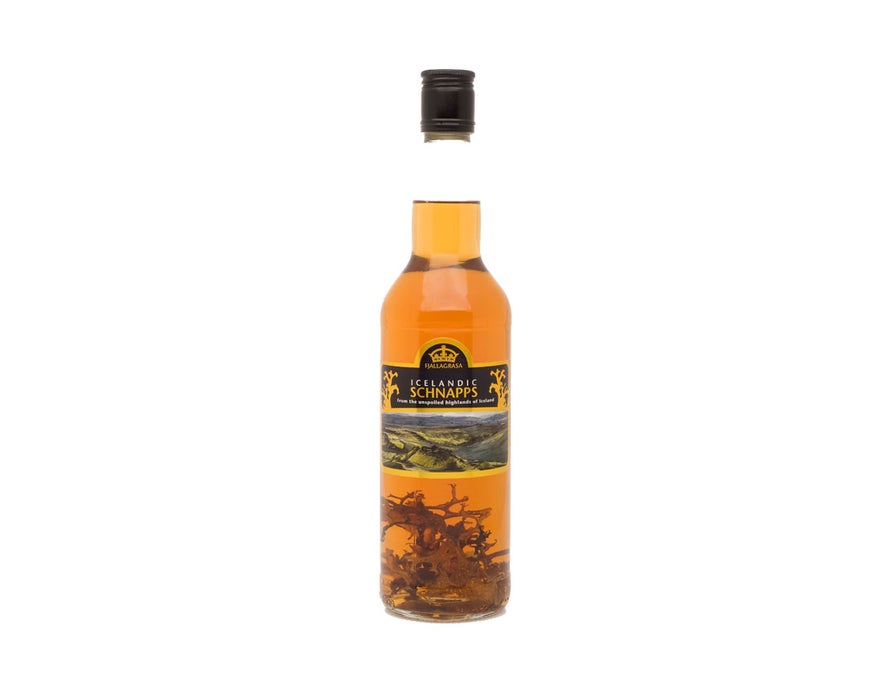
Have you ever thought, "Do you know what this drink could use? A large clump of moss floating in it." Well, you're not going to believe this.
Fjallagrasa Icelandic Schnapps is a unique spirit made from moss that is hand-picked on the mountains in Iceland. It is made by steeping the ground moss in alcohol and then distilling it to create a potent liquor.
Fjallagrasa Icelandic Schnapps draws its name from the Icelandic moss it's made from. Icelandic moss has been used for centuries for various purposes, ranging from traditional medicine to culinary applications. In terms of medicinal use, Icelandic moss has been traditionally employed to soothe respiratory conditions, including coughs and sore throats.
Where to Find Icelandic Liquor
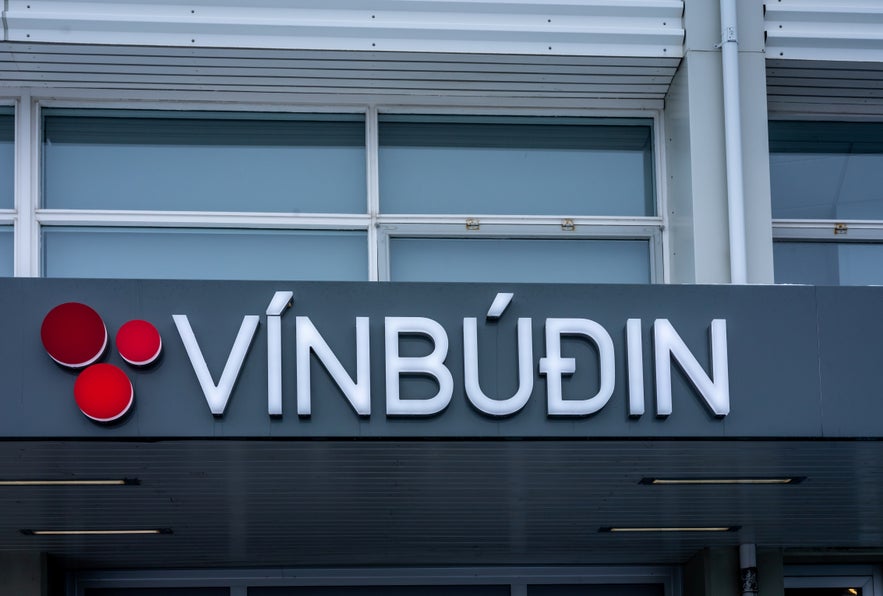 Now that you know what liquors to try out, here's where to find them:
Now that you know what liquors to try out, here's where to find them:
Keflavik Airport Duty-Free
If you're arriving at Keflavik Airport and plan on doing some drinking in Iceland, grabbing some bottles from the Duty-Free store is a great idea as the prices are lower. This is also a great place to take home a liquid souvenir when leaving the country if you've developed a taste for Icelandic liquor during your stay.
Vinbudin Alcohol Store
All over Iceland, you will run into the state-run chain of alcohol stores Vinbudin, the only stores selling alcohol in Iceland over the counter. Open from Mondays to Saturdays, the larger stores have a wide selection of different types of liquor, beer, and wine in stock, while the smaller ones tend to stick to the staples. Opening hours can vary depending on locations, with stores in villages in the countryside usually having shorter opening hours.
Bars and Restaurants
Iceland has a thriving restaurant and bar scene, with different establishments providing drinks from other providers. If you don't find the liquor you're looking for, don't be afraid to explore different bars or different items on the drink menu!
If you're worried about prices, remember to check your VIP Club access for exclusive discounts and offers at many of the most popular bars and restaurants in Reykjavik.
- Check out The Best Restaurants in Reykjavik
- See also: Where to Eat in Reykjavik: 12 Spots for Dining on a Budget
Icelandic Drinking Culture
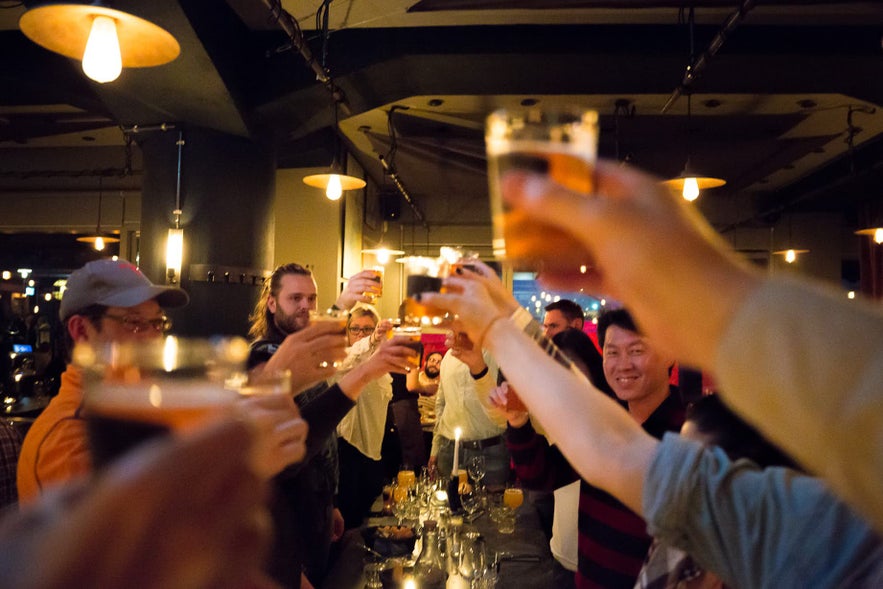
Photo from Locally Hosted Reykjavik Beer & Food Tour at the Old Harbor.
When going out drinking in Iceland, many visitors will be disappointed by the high prices of drinks downtown. This disappointment is shared by the locals, who will often opt to start the night with drinks at home to save money before venturing out later in the evening.
Because of this, the downtown area might sometimes seem quite empty early in the evening but will fill up around midnight. Remember that the legal drinking age in Iceland is 20, which is higher than in most European countries.
Thorrablot
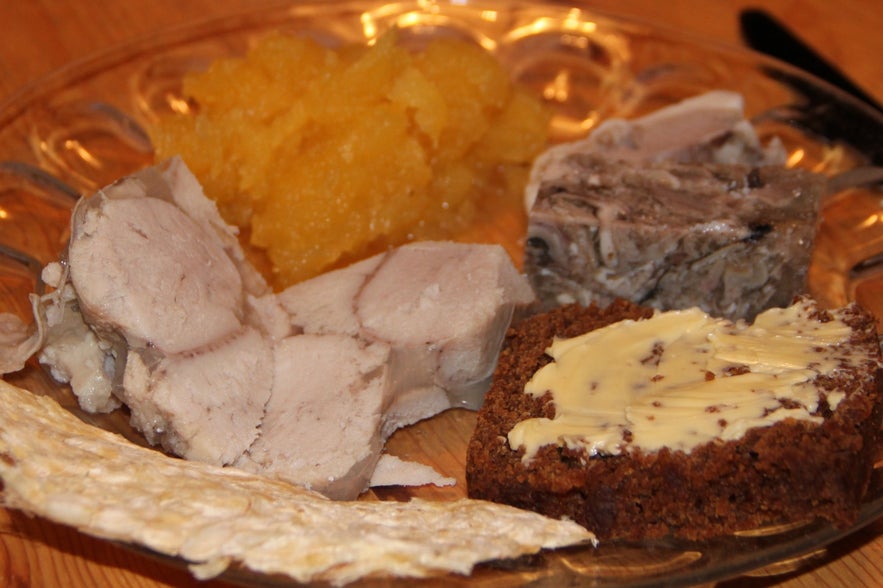 Drinking is associated with most festivities in Iceland, including the midwinter festival Thorrablot, where people come together for feasting and drinking. Traditional Icelandic foods are served, including cured meats, fermented shark, soured rams testicles, and liver sausage.
Drinking is associated with most festivities in Iceland, including the midwinter festival Thorrablot, where people come together for feasting and drinking. Traditional Icelandic foods are served, including cured meats, fermented shark, soured rams testicles, and liver sausage.
If this list doesn't make your mouth water, you can take comfort in the fact that many of these "delicacies" are to be washed down with Brennivín. Most Icelandic people will only partake in these foods once a year; for outsiders, it can be seen as a rite of passage.
Skál!
Did you enjoy our article about Icelandic liquor? Do you have any unanswered questions? What were your favorite spirits in Iceland? Did we is them? Please feel let us know in the comments below!
บทความอื่นที่น่าสนใจ
แหล่งน้ำพุร้อนและสระน้ำพลังงานความร้อนใต้พิภพที่ดีที่สุด 30 แห่งในไอซ์แลนด์
ดูลิสต์รายชื่อแหล่งน้ำพุร้อนและสระน้ำพลังงานความร้อนใต้พิภพที่ดีที่สุดทั้งหมดในประเทศไอซ์แลนด์ ค้นหาแหล่งน้ำพุร้อนธรรมชาติที่ดีที่สุดในไอซ์แลนด์ทั้งหมด รวมถึงสปาและสระน้ำร้อนพลังงานความร้อนใต้พิภพทั...อ่านเพิ่ม12 สิ่งที่ต้องทำและต้องไปดูเมื่อมาไอซ์แลนด์
ค้นหากิจกรรมยอดฮิต 12 อย่างที่คนไปเที่ยวไอซ์แลนด์ไม่ควรพลาด ศึกษาเกี่ยวกับกิจกรรมที่สนุกสนาน สถานที่มหัศจรรย์ทางธรรมชาติ และสถานที่ท่องเที่ยวที่ควรไปชมได้จากในลิสต์ 12 สิ่งที่ต้องทำและต้องไปดูเมื่อม...อ่านเพิ่ม
ไอซ์แลนด์ในฤดูร้อน - สุดยอดคู่มือการเดินทาง
ฤดูร้อนเป็นช่วงเวลาที่ดีในการค้นพบไอซ์แลนด์และความมหัศจรรย์ของประเทศโดยไม่มีข้อจำกัด ใช้เวลาที่มีแสงสว่างยาวนานมากขึ้นให้เป็นประโยชน์เพื่อสำรวจภูมิประเทศที่สวยงามของพื้นที่ไฮแลนด์ของไอซ์แลนด์ พบปะและท...อ่านเพิ่ม

ดาวน์โหลดตลาดการท่องเที่ยวที่ใหญ่ที่สุดของไอซ์แลนด์ลงในโทรศัพท์ของคุณเพื่อจัดการการเดินทางทั้งหมดของคุณได้ในที่เดียว
สแกนรหัส QR นี้ด้วยกล้องในโทรศัพท์ของคุณแล้วกดลิงก์ที่ปรากฏขึ้นเพื่อเพิ่มตลาดการท่องเที่ยวที่ใหญ่ที่สุดของไอซ์แลนด์ไว้ในกระเป๋าของคุณ ป้อนหมายเลขโทรศัพท์หรือที่อยู่อีเมลของคุณเพื่อรับ SMS หรืออีเมลพร้อมลิงก์ดาวน์โหลด
